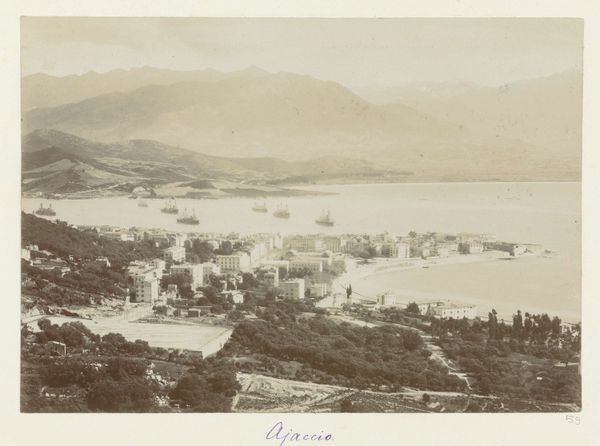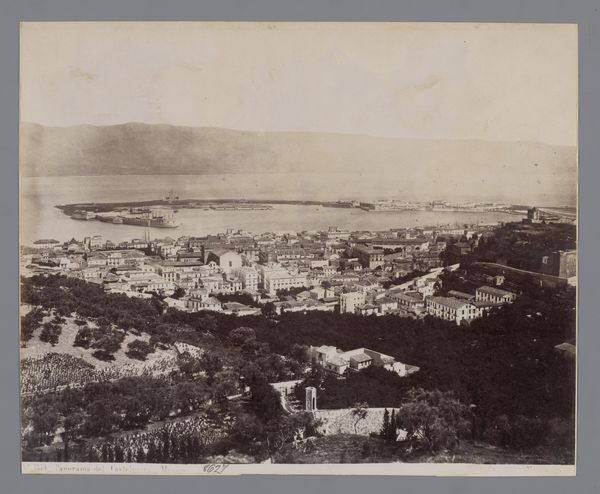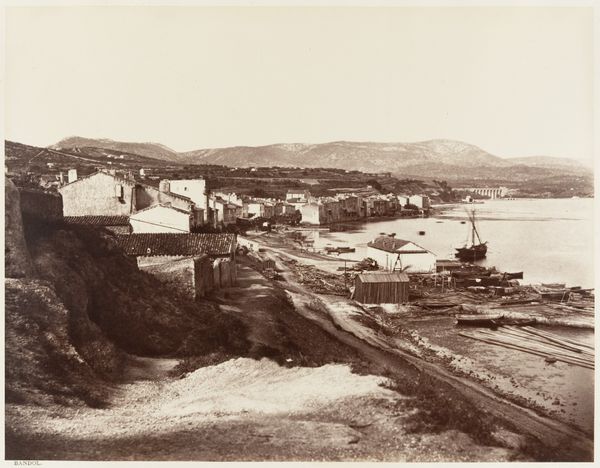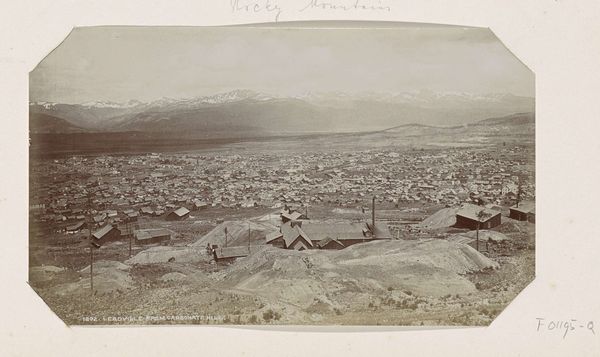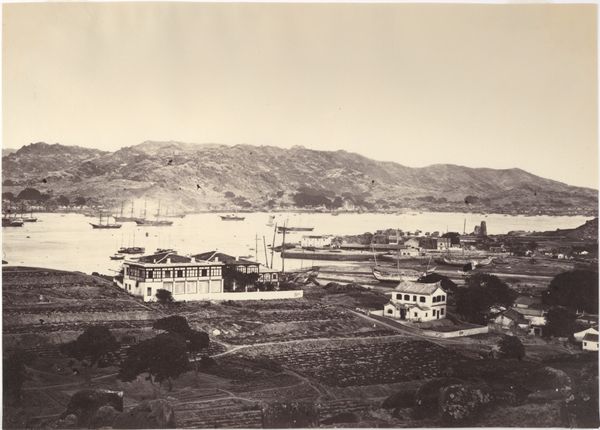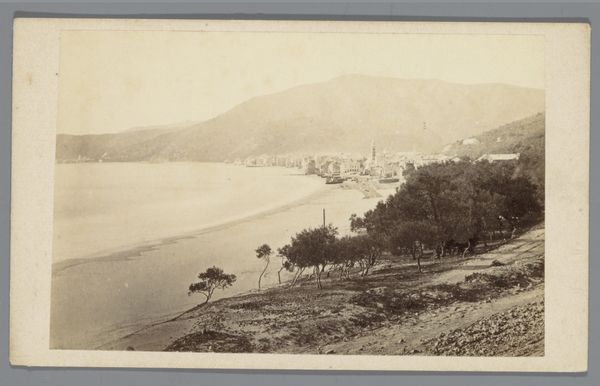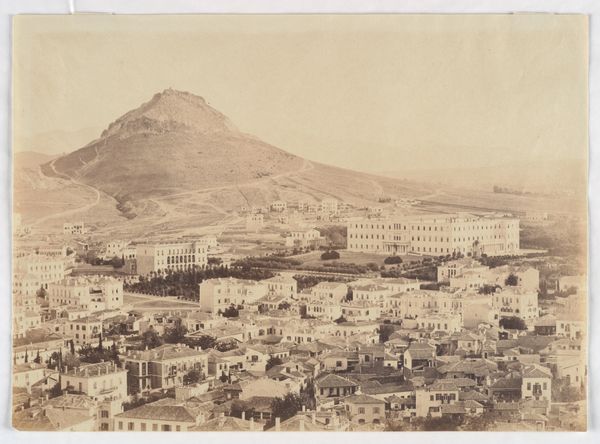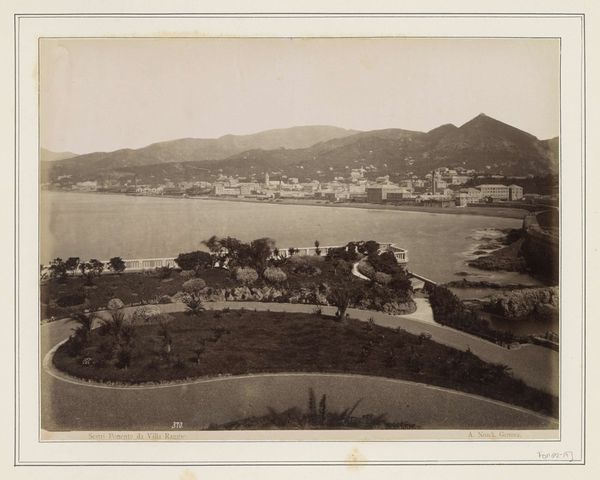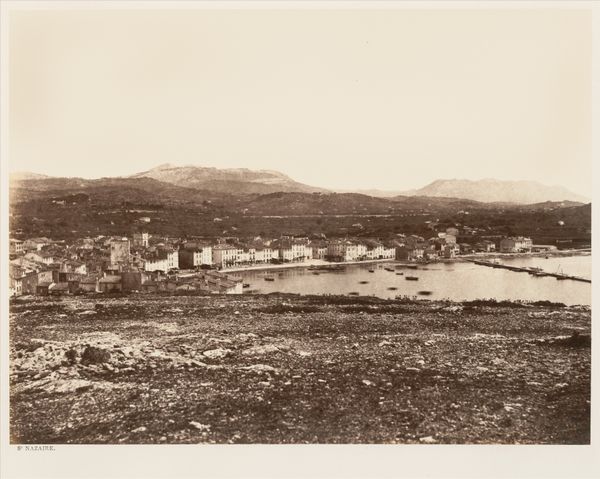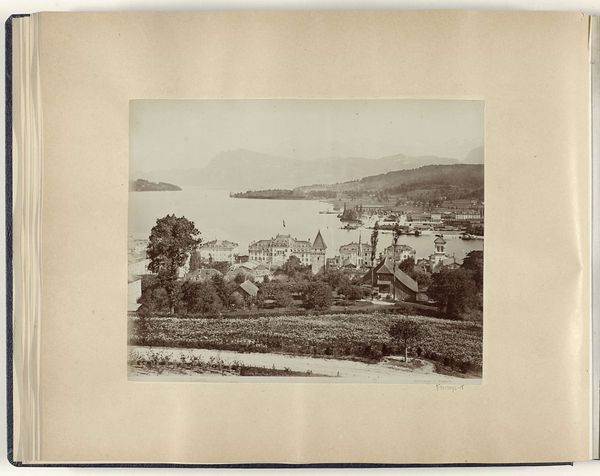
photography, albumen-print
#
landscape
#
photography
#
orientalism
#
cityscape
#
albumen-print
Dimensions: height 220 mm, width 278 mm, height 469 mm, width 558 mm
Copyright: Rijks Museum: Open Domain
Curator: This albumen print, entitled "Gezicht op Beiroet," or "View of Beirut," was captured between 1867 and 1877 by Félix Bonfils and is now held here at the Rijksmuseum. What strikes you most about this cityscape? Editor: The overall tone feels so... sepulchral. The soft focus and monochromatic palette almost transform this vibrant coastal city into a ghost town suspended in time. There's a wistful melancholy embedded in this depiction. Curator: That's a fascinating reaction. The choice to use albumen print certainly gives it that aged, almost ethereal quality. I am immediately drawn to its importance as part of the Orientalist movement and its reflection of European interest in documenting and representing the Near East, specifically how the relatively new medium of photography contributed to the broader European project. Editor: Absolutely. It's fascinating how Bonfils employs this photographic technique to project a specific image of Beirut, essentially constructing a narrative about the "Orient" for a European audience. Look at the way the buildings huddle together. Even with the openness of the sky and water, there’s an undeniable feeling of being densely packed. Are those the Taurus Mountains capped with snow? It seems deliberately picturesque. Curator: It is very carefully constructed. Bonfils opened a studio in Beirut in 1867. It's worth considering how studios like these not only documented, but also shaped perceptions and helped cement the idea of an exoticized "Orient" through their widespread circulation of imagery, which further impacted colonial dynamics. The perspective is taken high enough up the slopes to suggest observation and survey. Editor: You're right. The high vantage point grants a sense of control, of overviewing a land that, to Western eyes, might seem foreign or even chaotic. The placement of sailing vessels in the water further underscores this theme of movement, and access for the West. Though sepia-toned and somewhat static, this photograph hints at broader issues around colonial influence. What this landscape conceals in terms of actual history, its politics, its complex cultures, speaks loudly. Curator: It's a reminder that what seems like objective documentation always bears the mark of its creator and the cultural moment in which it was made, highlighting the complex history of photography in the East. I'll think differently about my snapshots now. Editor: Me too. Even landscapes have stories buried within.
Comments
No comments
Be the first to comment and join the conversation on the ultimate creative platform.
